
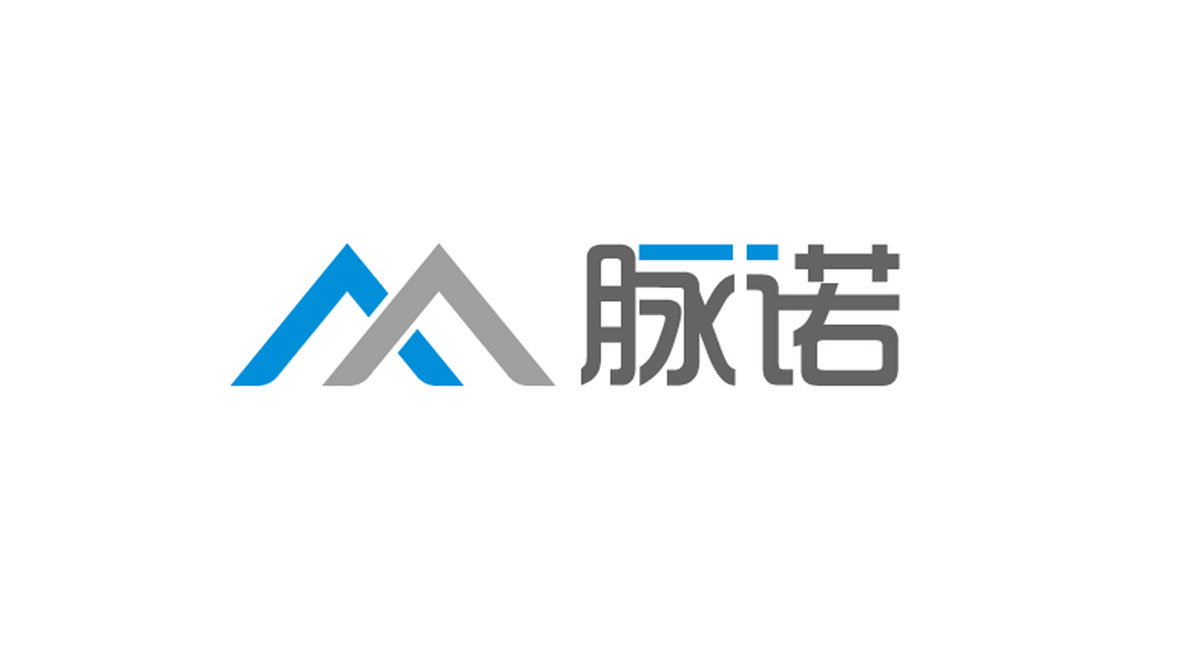
3.清洁和维护腔室
Cleaning and maintaining the chamber
3.1清洁残余(Cleaning residues)
在清洗灭菌室时,必须遵循特定灭菌器制造商提供的用户手册和维护说明。不应使用灭菌器制造商未明确推荐或批准的清洁剂和方法。
When cleaning a sterilization chamber, it is important to follow the user manual and maintenance instructions provided by the manufacturer of the specific sterilizer. Cleaning agents and methods that are not explicitly recommended or approved by the sterilizer's manufacturer should not be used.
其原因是,在表面清洁过程中,可能会发生复杂的相互作用,这可能会损坏个别消毒器、其配件或其外围设备。
The reason for this is that, among other things, complex interactions which may damage the individual sterilizer, its fittings or its peripheral equipment, can occur during the surface-cleaning process.
3.2定期腔室维护(Regular chamber maintenance)
实际经验表明,在化学或电化学清洗的裸露金属内表面区域,通过用符合DIN EN 285(给水)规格的水每周擦拭冷室,能显著抑制甚至防止不良的表面变色/薄层,不用添加任何清洗剂。
Practical experience has shown that, on chemically or electrochemically cleaned bare metal interior surface regions of sterilizers, undesirable surface discolourations/films can be significantly inhibited, or even prevented, by wiping out a cold chamber on a weekly bases with water that meets the specifications of DIN EN 285 (feed water), without adding any cleaning agents.
顽固地附着在腔体前表面的任何残留物(例如,来自标签等)。必须尽快使用适当的刮刀工具(塑料刮刀或其他类似物品,不能使用金属工具)。然而,当这样做时,必须注意不要损坏(抓挠或其他的损坏形式)腔体的内表面。
Any residues stubbornly adhering to the interior surface of the chamber (e.g. from labels, etc.) must be manually removed as soon as possible with the use of appropriate scraping tools (plastic scraper or other similar items, do not use metal tools). However, when doing so, one must take care not to damage (scratching or other forms of da- mage) the chamber's interior surface.
使用化学物质去除腔内表面的残留物应首先得到腔体制造商的批准。
The use of chemical substances to remove residues on the interior surface of the cham- ber should first be approved by the chamber's manufacturer.
一旦任何可以容易去除的薄层从腔室的内表面擦除掉,作为定期腔室维护的一部分不锈钢表面也可以选择性地重新钝化。这可以使用湿化学酸性钝化溶液精准可靠的进行。根据特定的制造商,不同的水溶液提供了表面护理和再钝化能力的最佳组合。
Once any films that can easily be wiped away are removed from the chamber's interior surfaces, the stainless steel surface can also be selectively repassivated as part of regular chamber maintenance. This can be carried out in an accurate and reliable man- ner with the use of wet-chemical acidic passivation solutions. Depending on the specific manufacturer, different aqueous solutions offer the optimal combination of surface care and repassivation capacity.
4.去除管道薄层或腐蚀产物
Removing rouging films or corrosion products
在受这一现象直接影响的专家(设备制造商和用户)中,目前对起因、导致的问题和经常需要进行与灭菌室中的膜层相关的修复有广泛的不同意见。
Among the specialists directly impacted by this phenomenon (equipment manufacturers and users), there is presently a wide range of different opinions on the cause, resulting problems and recurring need for restoration related to films in sterilization chambers.
一些参与其中的人主要将这些薄层描述为“仅仅是视觉上的麻烦”,而另一些人则要求定期的无残留去除。对这些观点的态度差异清楚地表明,这一现象在如今的专家中是多么有争议。
A number of those involved describe these films mainly as 'merely visually bothersome', whilst others demand a periodic residue-free removal. The marked difference in attitude towards these issues makes it clear just how controversial the phenomenon is among experts today.
为了实际应用,这意味着,在风险分析的帮助下,每个负责任的中央无菌服务室(MPPU/CSSD)最终必须决定其自身的短期和中期政策来消除其直接的影响范围。
For the purposes of practical application, this means that, with the aid of a risk analysis, every responsible central sterile services department (MPPU/CSSD) must ultimately decide on its own shortand medium-term policy for its immediate sphere of influence.
如果一个部门决定实施定期的机械、化学或电化学恢复措施,它有一系列不同的选择可供选择——然而,所有这些都必须由专业公司与设备制造商和用户合作执行。
If a department decides to implement periodic mechanical, chemical or electrochemical restorative measures, it has an array of different options to choose from – all of which, however, must be performed by specialist companies in cooperation with both the equipment manufacturer and the user.
所需所有要求如下:
➡操作人员、灭菌器制造商和专门从事敏感不锈钢表面的修复公司必须共同合作
➡装置的管接头必须被单独拆卸和处理
➡必须计划并遵守职业安全措施
➡操作员必须考虑到消毒器的停机时间
➡如适用,必须安装防尘墙,并采取某些针对操作人员的安全预防措施
➡必须执行质量控制,包括恢复措施的文件
All measures require the following:
➡ The operator, sterilizer manufacturer and rehabilitation company specialising in sensitive stainless steel surfaces must all work together
➡ Fittings must be removed and treated separately
➡ Occupational-safety measures must be planned and adhered to
➡ Operator must account for sterilizer downtime
➡ Where applicable, dust protection walls must be put up and certain operator-specific safety precautions taken
➡ Quality control, including documentation of rehabilitation measures, must be carried out
本手册中的图10和图11旨在说明现场在灭菌室中去除表面薄层所涉及的必要工作。
Figures 10 and 11 in this brochure are intended to illustrate the necessary work involved in the on-site removal of surface films in sterilization chambers.
一般来说,可以使用不同的技术选择或组合来有效地去除表面薄层。这些选择应始终在与所有有关各方协商后再作出决定。这些决定应同时考虑到红锈层的严重程度,最重要的是,现场的条件。
In general, different options or combinations of techniques are available for effectively removing surface films. These options should always be decided on in consultation with all of parties involved. These decisions should take into account both the severity of the rouging film and, above all, the local conditions.
机械去除(Mechanical removal)
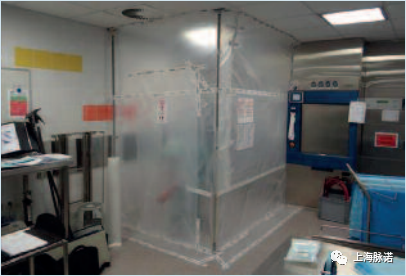
图10:创建工作区域(防尘墙)Creating a work area (dust protection wall)
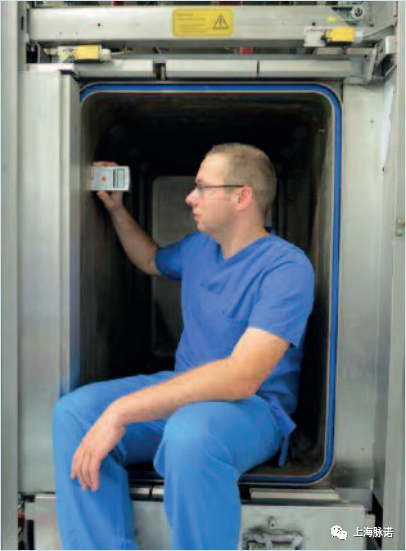
图11:质量保证(腔室内表面的表面粗糙度测量)
Quality assurance (surface roughness measurement on the chamber's interior surface)
如果腔体的内部表面已被红锈严重变色,则可以通过进行彻底的机械清洁(使用磨料机械工艺)来清洁受影响的区域以获得更美观的外观。
If a chamber's interior surface has been severely discoloured by rouging, the affected regions can be cleaned-up for a more sightly appearance by performing a thorough mechanical cleaning (using abrasive mechanical processes).
应该记住,在该技术过程中,很大一部分富含氧化铁的颗粒不可避免地被嵌入不锈钢表面并因此保存在那里,这意味着因为设备继续使用,腐蚀在不久的将来会再次形成。因此,在大多数情况下,红锈/腐蚀层不久就会重新出现。
It should be kept in mind that, during this technical procedure, a significant portion of the iron-oxide-rich particles will inevitably be compacted into the stainless steel surface and thus stored there, which means that corrosion is bound to form again in the near future as the apparatus continues to be used. In most cases, the rouging/corrosion film thus reappears before long.
出于这个原因,应该以批判性的眼光看待纯机械表面修复。
For this reason, a purely mechanical surface rehabilitation should be viewed in an critical light.
在某些情况下,也会产生顽固的污渍,例如,从标签粘合剂,可以在灭菌中使用的温度条件下很好地并且确切地烘烤到表面上。除了将受影响的区域浸泡在水或化学溶剂中然后使用塑料刮刀进行去除之外,在这些情况下除了机械清理之外别无其他选择。当产生这种类型的污渍时,作为可能使用的其他化学或电解处理选项的预处理,机械清洁也是必要的。
In some cases, stubborn soiling also occurs, e.g. from adhesive labels which can be well and truly baked onto the surface at the temperatures used in sterilization. Aside from soaking the affected area in water or chemical solvents and then using plastic spatulas for removal, there is no other alternative to a mechanical cleaning in these situations. When soiling of this type occurs, mechanical cleaning is also necessary as a pre-treatment for other chemical or electrolytic treatment options that may be used.
与符合DIN EN 285(给水)规格的(非常简单)定期护理/清洁的主要区别在于使用合适的不锈钢清洁剂(不含氯化物!)并且用更粗糙的纤维羊毛来代替棉布。也可以通过机器(例如刷砂或抛光机)进行清洁。为此,(砂光/抛光)布或皮带应适合机器,以便于机械去除薄层。 但是,这并不能最大限度地减少适用于机械清洁方法的基本技术注意事项。
The main difference to (very simple) regular care/cleaning with water that meets the specifications of DIN EN 285 (feed water) is that suitable stainless steel cleaners (containing no chloride!) are used, and that rougher fiber fleeces are used in place of cotton cloths. Cleaning can also be performed by machines (e.g. brush-sanding or polishing machines). To do so, (sanding/polishing) cloths or belts are fit onto the machines to facilitate the mechanical removal of the films. However, this does not minimise the basic technical caveats that apply to mechanical cleaning methods.
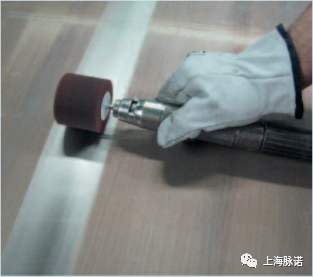
图12a:机械恢复措施(Mechanical rehabilitation measures)
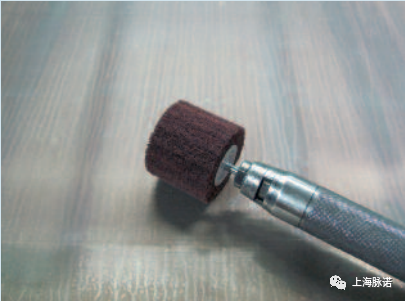
图12b:机械恢复措施(Mechanical rehabilitation measures)
特别是在要进行磨砂/抛光或电抛光的表面,必须仔细考虑或采取用于进行机械修复的程序,因为表面的状况(例如表面粗糙度)可能会因此而变差。当腔室的内表面进行电抛光时,机械工艺——包括使用纤维羊毛材料,甚至是刷子打磨/抛光措施——会对不锈钢表面产生不利影响,至少在局部也有不利影响。
Particularly where surfaces are to be mechanically sanded/polished or electropolished, the procedure used to perform mechanical rehabilitation must be carefully considered or adapted, as the condition of the surface (e.g. surface roughness) can be deteriorated as a result. When the interior surfaces of a chamber are electropolished, mechanical processes—including the use of fibre fleece materials or even brush-sanding/polishing measures—have an adverse effect, at least locally, on the stainless steel surfaces.
彻底清洁通常会破坏钝化层。 因此,在将系统恢复运行之前,建议等待一定时间(通常约48小时)同时允许空气自由进入腔室,以便允许钝化层再生(自然再钝化)。活性(湿化学)钝化剂也可用于优化和大大加快再钝化过程。该方法还改善了钝化层的化学特性(例如厚度,Cr/Fe比率)。
A thorough cleaning will usually destroy the passive layer. Waiting for a certain amount of time (normally about 48 hours) whilst also allowing air to freely enter the chamber is therefore recommended before putting the system back into operation, so as to allow the passive layer to regenerate (natural repassivation). Active (wet-chemical) passivating agents can also be used to optimise and greatly speed up the repassivation process. This approach also improves the passive layer's chemical characteristics (e.g. thickness, Cr/Fe ratio).
然而,重要的是要记住,不锈钢表面的机械研磨会导致钝化层的永久破坏。经验表明,这就消除了钝化层完全自然自我再生的可能性,甚至是在电抛光后表面上观察到了相似的再生。这意味着基于自然空气的再钝化将在有限的程度上或完全不发生,因为在机械抛光过程中改变(损坏)结构的不锈钢表面不再具有完全的钝化能力。然而,在这些情况下,湿化学再钝化剂至少可以用来促进再钝化。
However, it is important to keep in mind that this mechanical grinding of stainless steel surfaces causes a permanent destruction of the passive layer. Experience has shown that this then eliminates the possibility of a complete natural self-regeneration of the passive layer, or even a regeneration that is equivalent to the results seen on electropolished surfaces. This means that a natural air-based repassivation will take place either to a limited extent or not at all, since stainless steel surfaces that have been structurally altered (damaged) by mechanical processes no longer possess their full passivation capacity. In these situations, however, wet-chemical repassivation agents can be used to at least promote a repassivation.
一旦机械清洗完成,重要的是确保所有残留物(如灰尘和任何磨砂/抛光材料)被完全清除。
Once the mechanical cleaning is complete, it is important to ensure that all residues (e.g. dust and any sanding/polishing materials) are completely removed.
来自:德国的钱伯斯工作组(德语缩写:AKK)的手册

Equipment Sales:
Mr. Wang: +86-15921887786
Mr. Li: +86-18017268222
Processing Service:
Ms. Zhang: 18001952488
Ms. Long:13386001718

Add.: No. 8 Xinshun Road, Zhujing Industrial Park, Zhujing Town, Jinshan, Shanghai, China

Email:
sales@mirrorglabrous.com